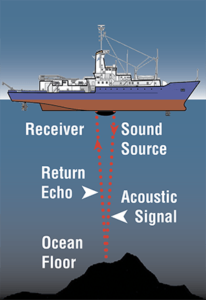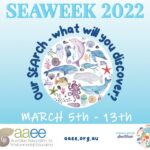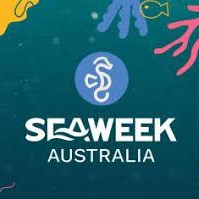
Australia’s SeaWeek 2023 will be celebrated throughout the country from 4-12 March 2023 and from 2-10 March 2024. The initiative aims to spotlight community awareness, inform, and foster an appreciation for the sea. The theme for this year centers around Ocean Literacy Principle 2: The ocean and life within it significantly influence the Earth’s features.
This is a fascinating topic and a great basis for exploring all things relating to the ocean in schools and childcare settings. So, here is some background information plus 20 teaching activities for SeaWeek 2024 that will engage and inspire kids to want to learn more about and protect the ocean.
Why is the Ocean a Defining Feature of Our Planet?
The ocean is the defining physical feature on our planet Earth as it covers most of the earth’s surface – around 70% in fact.
It is also home to the majority of life on earth and responsible for around 70% of the oxygen we breath, as well as absorbtion of carbon dioxide, climate regulation, jobs, food, waste removal, , marine transport, medicine, travel, recreation and fun. We could go on…
Do we say Ocean or Oceans?
Many people ask the question, “Do we say ocean or oceans”? The answer is that there is just one ocean, which contains many ocean basins, such as the North Pacific, South Pacific, North Atlantic, South Atlantic, Indian, Southern and Arctic. So, we should say ‘the ocean’ rather than ‘the oceans’.
What is SeaWeek Australia?
SeaWeek Australia started in 1987 at the Marine Discovery Centre, Queenscliff, Victoria. It began as an art competition that was promoted in all states of Australia and was accompanied by an educational kit consisting of marine activities and information brochures. Today SeaWeek Australia is a major public awareness campaign focusing on encouraging an understanding of and appreciation for the ocean and all things related to it. The campaign is promoted by the Australian Association for Environmental Education (AAEE) – see link below.
20 Teaching Activities for SeaWeek 2024
Schools and educators can use SeaWeek Australia as a focal point for studies accross a wide range of curriculum themes. Or they can simply use the event to inspire children through fun based ocean themed activities. Here are 20 teaching activities for SeaWeek 2023 to get you started…
Early Learning Teaching Activities for SeaWeek Australia
- Decorate your classroom or childcare setting
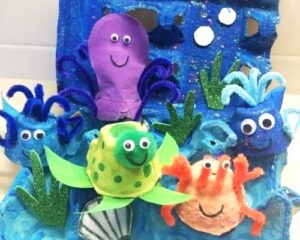
- Read an ocean book like The Singing Mermaid or The Snail & the Whale by Julia Donaldson
- Host an ocean themed coloring or drawing competition or SeaWeek Poster Competition
- Colouring-in Competition
- Create an ocean in an egg carton
- Create an ocean sensory bin with ice
- Make your own socktopus
- Paint a puffer fish
- Make egg carton ocean animals
- Organise an ocean themed incursion – why not book one of our interactive Programs to give the kids a real hands-on experience of marine creatures with our lively team of animals!
Link to EARLY LEARNING RESOURCES
Primary School Teaching Activities for SeaWeek 2023
- Launch a Plastic- free class challenge – no plastic in lunch boxes for a day, then maybe extend to a week
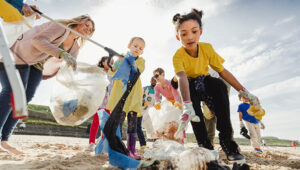
- Create a plastic diary
- Plastic ocean cycle activity – using our free infographic
- Organise a field trip to the beach to explore
- Organize a beach clean (& BBQ?) with prizes
- Habitat and adaptation activity
- Classification activity
- Organise an ocean themed incursion – why not book one of our interactive PROGRAMS to give the kids a real hands-on experience of marine creatures with our lively team of marine animals!
- Teach students curriculum topics using our Humpbacks online teaching resources.
- Fundraise for a local ocean focused charity – on the Sunshine Coast that could be: Coolum & North Shore Coast Care, Ocean Crusaders or Sea Shepherd.
Link to PRIMARY RESOURCES
Further reading
School’s Guide to Key Ocean Events in 2024
SeaWeek Official Website – packed with useful info and resources
UNESCO Ocean Literacy PORTAL
OCEAN EVENTS 2024 CALENDAR
BLOG – 10 REASONS WHY WE NEED OUR OCEAN


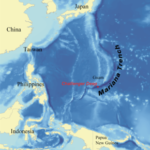 Experts believe that more than 80 percent of the ocean floor is unexplored and has never been mapped. It’s crazy to think that a far larger percentage of the moon and the planet Mars has been mapped than the ocean on the planet where we live!
Experts believe that more than 80 percent of the ocean floor is unexplored and has never been mapped. It’s crazy to think that a far larger percentage of the moon and the planet Mars has been mapped than the ocean on the planet where we live!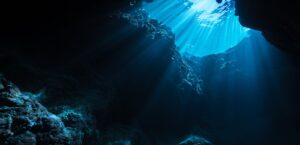 Nowadays, we talk about the earth’s ‘one’ ocean as each named ocean (such as the Pacific Ocean) within it is connected to at least two other oceans, creating one whole ocean.
Nowadays, we talk about the earth’s ‘one’ ocean as each named ocean (such as the Pacific Ocean) within it is connected to at least two other oceans, creating one whole ocean.